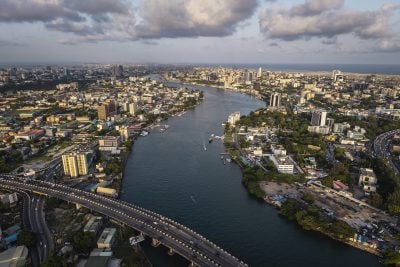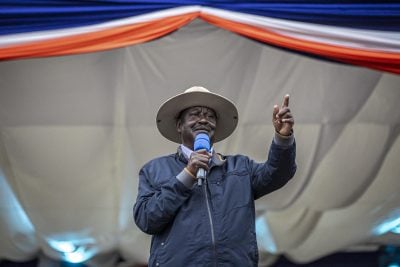This article was produced with the support of Africa Finance Corporation
Africa has over $4 trillion in untapped resources that, if effectively mobilised, could catalyse an era of infrastructure-led growth. This is according to the Africa Finance Corporation’s State of Africa’s Infrastructure Report 2025, which was launched virtually on 5 June 2025. Drawing on the experience of Asia, the report calls for deeper financial markets, stronger public institutions and targeted policy reforms to channel longer-term savings into energy, transport and manufacturing and digital infrastructure for the continent.
Presenting the highlights of the report, Dr Rita Babihuga-Nsanze, AFC’s chief economist and director of research and strategy, noted that this year’s report rises to the challenge, set out in last year’s edition, to identify and map domestic capital pools. “We didn’t just estimate the numbers; we set out to locate where these savings are held across the continent and how they’re currently being allocated. It is the most exhaustive bottom-up effort to date,” she said.
The report, she said, maps institutional capital by geography and asset class across 28 countries, covering 80% of Africa’s GDP. “African markets are improving in data quality, transparency, and regulatory disclosures,” she said, adding that “this report is an opportunity to back up the numbers that are quoted when talking about Africa’s institutional savings.”
According to the report, the continent has over $1.1 trillion in institutional capital, lodged in pension funds, insurance, sovereign wealth funds and public development banks. In addition, there is nearly $500bn in central bank reserves, and by a conservative estimate, another $200bn in household savings in Africa’s vast informal economy. “Put together, these figures provide a fuller, more practical view of the capital Africa can mobilise for its transformation,” Babihuga-Nsanze said, adding that the question that arises is how this capital can be directed into productive investments for the benefit of the continent.
Babihuga-Nsanze said that with allocations heavily concentrated in low-risk, short term assets such as government securities, money managers on the continent are crowding out the private sector while increasing their exposure to sovereign, which has been heightened by the fiscal constraints that governments are currently facing. This conservative approach contrasts sharply with in OECD countries, “where pension capital is channelled into the real economy via equities, corporate debt and infrastructure. In short, Africa’s most strategic pool of long-term capital is in the OECD world in support of [their] long-term transformation.”
Actionable recommendations
The report, Babihuga-Nsanze said, recommends actionable steps, including formally recognising infrastructure and long-term assets as investable classes, strengthening the capacity of pension managers and enhancing financial intermediation. Pointing to InfraCredit, the Nigerian finance house, as an example of success, she noted that “It has demonstrated how market-based de-risking can crowd pension capital into infrastructure without mandatory rules.” With its credit guarantees, InfraCredit has helped increase pension allocation to infrastructure from 1.2bn naira ($775,000) to over 242bn naira ($156m) in under a decade.
Babihuga-Nsanze stressed that it is time for the narrative to shift and the AFC prefers to view Africa’s infrastructure deficit not as a constraint but rather “as an opportunity to reshape economies, accelerate industrialisation, and attract investment”. The report thus sets out sector-specific strategies to support the continent’s ambitions for growth. In energy for example, the reports adopts the benchmark of 1,000 kWh per capita per year as the minimum for a functioning economy, out of which 70% must be utilised for industrial purposes. “Most African countries are far below this threshold,” Babihuga-Nsanze noted, citing India’s progress in ramping up generation capacity. “If we want to meet Africa’s industrial ambitions, we need to scale energy with intent.”
Making tracks
The report also focuses on the rail sector, which Babihuga-Nsanze said is central to the continent’s industrial future. Currently the continent’s railways are fragmented and, especially in western and central Africa, remain on colonial-era tracks that were designed only to facilitate the extraction and movement of raw materials.
This, she said, is set to change. “We’re entering a new cycle of rail investment,” she said, with over 7,000 km of lines under construction. The flagship Lobito Corridor, for example, which connects the eastern and western coast of the continent with a Trans-African Railway, has the potential to invigorate trade across the region. “The opportunity is not just to close gaps,” she concluded, “but to reimagine Africa’s infrastructure as a connected, catalytic platform for trade and transformation”.
Reacting to the report, Patrick Njoroge, a former governor of the Central Bank of Kenya, stressed that investment into infrastructure must be part of a broader, integrated push for sustainable development. Without complementary investments into sectors such as water, health and education, “we risk building white elephants,” he warned.
Njoroge however sounded a note of caution with regard to pension funds and central bank reserves. Pension funds have a fiduciary duty to contributors and should remain focussed on retirement security rather than infrastructure returns. While sovereign bonds have long been seen as safe bets, recent crises in countries like Ghana have shown otherwise, he pointed out. Similarly, with an average of 3.4 months of import cover, barely above the critical threshold of 3 months and with several countries facing debt challenges, there is actually little room for manoeuvre, with central banks needing to keep these reserves in highly liquid and secure assets. As a result of these greater macroeconomic constraints, it is not so evident for these reserves to be deployed to more productive sectors of the economy. Rather, digital tools must be harnessed to increase savings.
Nonetheless, he did stress that empirical evidence highlighted that African risk is often mispriced. “Recent research [from Moody’s and the AfDB] has shown that Africa has, at 1.9%, one of the lowest default rates on infrastructure and related projects compared to other regions. However, there is work to be done to align this outcome with the cost of borrowing.”
Donald Kaberuka, chairman of Southbridge Capital and former president of the African Development Bank, noted that even if all Africa’s domestic savings were deployed for the purpose, this would not be enough to bridge the infrastructure gap. Rather, he argued, Africa needs a new form of financial intermediation that directs surplus savings from ageing, capital-rich nations in the global north into infrastructure investment needs in Africa, where there is a young and growing population.
Vietnam, he said, had successfully done this, attracting capital from ageing societies like South Korea, Taiwan, China, Japan and Singapore. “I think it is so important for African financial institutions to think of creating this platform which will enable them to do this,” he stressed.
On energy, Kaberuka urged a regional approach to achieving energy self-sufficiency, noting that not all countries can become self-sufficient. With enormous reserves of hydropower, Guinea, Ethiopia, the Congo Basin, Lesotho and parts of Angola and Zambia can become sources for a continent-wide approach to clean power generation. “Regional cooperation and regional power pools are necessary for the transition,” he said.
He called for implementation of the single aviation market, which would instantly enable Africans to travel freely around the continent. “That does not require money, does not require infrastructure; it requires someone to make a decision which allows the aviation market to work,” he observed, stressing in conclusion that “we need to think not just out of the box but bring in another box”.
Dr Hanan Morsy, deputy executive secretary and chief economist at the United Nations’ Economic Commission for Africa, said the report offered a timely counter-narrative to the perception that Africa lacks capital. The problem, she said, is rather fragmentation and aversion to risk.
“What we need to do is to build aggregation platforms that syndicate institutional investors, commercial banks and sovereign funds to mobilise at scale, she proposed and called on the AFC and other development finance institutions to “take the lead in creating an African infrastructure consortium that pools, projects, diversifies risk and delivers investable pipelines”.
Morsy also identified the state of public finances as another challenge that must be effectively managed to free up more financing for infrastructure. “As long as we have governments over-borrowing domestically, infrastructure investment will be effectively crowded out. Creating the right conditions will be critical for infrastructure to flourish as an asset class, she emphasised.
Reflecting on the report, Acha Leke, senior partner at McKinsey & Company, said it raises two important questions: how to better leverage available resources; and how to grow them into a more sustainable and transformational financial base for the continent. Noting that development assistance has been declining for some time, Leke said it is imperative for each African country to utilise its own resources to pursue its development.
A ready source of funding
Pension funds, for example, offer a ready source of funding, he said, especially as many are currently investing less than they can even under current regulations. “In many countries, they can allocate up to 10% but they only invest 2% today. If we were to match that, we could probably [tap another] $80bn.” The question, he noted, is “how do we nudge, encourage and in some cases, force pension funds to allocate more money to this asset class,” which he added, must also be able to generate returns to justify the investment.
It is also necessary to grow the pot of available resources, since even the $4 trillion identified by the report is not enough and is concentrated in the continent’s larger economies. This means most of Africa’s 54 countries are still far behind, and while “there has been some progress in Kenya and Nigeria, for example, Leke said others might need encouragement. He suggested that a continental leaderboard that shows which countries are making progress in growing their domestic savings, expanding pensions and insurance coverage and implementing the necessary reforms, could be the motivation they need.
Reflecting on the experience of his company, Chinua Azubike, chief executive officer of InfraCredit, said it had benefited from the support of its backers, development finance institutions (DFIs) including AFC, as well as from Nigerian pension funds, which for the first time decided to invest in an infrastructure fund. “We’ve seen where in Nigeria, for the first time, pension funds are able to on-lend to projects in tunnels of up to 20 years.”
This includes support for the Lagos Free Zone, which recently raised a 20-year bond, and a toll road project backed by a sub-national government via public-private partnership. “These sorts of tunnels were considered impossible,” Azubike said, until now. InfraCredit’s model tackles the critical gap between “perceptional risk and real risk,” offering guarantees that it will step in in the event of a default. Azubike reported, however, that “there has been zero defaults in our portfolio over 12 sectors,” demonstrating that “InfraCredit does have very low [risk] projects that we initially guaranteed in secondary issuances without the need for guarantees.” He stressed the need for currency stability. “We can’t build markets where exchange rate volatility impacts on the consumer’s ability to pay, so matching that asset against the liability structure in the same currency is very critical.”
Mercy Thuo, executive director, CPF Capital and Advisory and group head of projects, CPF Group backed the central thesis of the report that “Africa doesn’t lack capital. It just needs better financial engineering of the capital that we already hold.”
Dr. Hosea Kili is managing director of the CPF Group and also chairs Kenya’s committee of experts on infrastructure funding, emphasised the urgency of tapping private sector funding in the light of shrinking fiscal space.
This will, however, Kili said, require structural change. “Our regulatory framework discourages alternative investments from our portfolios,” he noted, calling for limitations on sovereign bond allocations and new incentives for infrastructure bonds.
To address fragmentation and build ticket size, Kili proposed aggregation by players, to bring together funds willing to invest in infrastructure projects. More broadly, Kili called for continent-wide regulatory reforms and alignment so that investment in other countries is not seen as “foreign investment”.
Not a burden, but a springboard
Lerato Mataboge, the newly nominated African Union (AU) commissioner for infrastructure and energy, called on all stakeholders to reframe Africa’s infrastructure challenge not as a burden, but as a springboard: “Africa’s infrastructure deficit has too often been described as a crippling challenge when it is in fact a real and tangible opportunity to shape Africa’s future.”
She praised the report’s alignment with the AU’s key strategies, noting its recognition of initiatives such as “the push towards greater domestic revenue mobilisation, the development of Africa’s single electricity market and the construction of an integrated high-speed train network”. These, she stressed, are critical to delivering on the goals of the African Continental Free Trade Area, Agenda 2063 and the continent’s broader development ambitions.
Concluding the discussions, Samaila Zubairu, AFC’s president and CEO, argued that the shifting global landscape presents both a warning and an opportunity. “The world has indeed changed,” he said, pointing to the new focus of the continent’s traditional development partners on “defence and rearmament of their respective economies” and the reality of “fractionalisation of the world”.
However, he said, within this geopolitical realignment lies Africa’s strategic leverage: “As you seek to reindustrialise your economy, you need secure and reliable supply chains and of course the minerals for that are in Africa.”
The continent is thus not just relevant but essential to this emerging global resettlement. Zubairu posited that Africa must stop exporting raw materials and start creating value at home. “It is this transformation that creates the quality jobs that leads to increased savings,” he said, reinforcing the connection between industrialisation, employment and capital formation.
Africa must take ownership
“We must take ownership of our development and we must fund it,” he added, urging Africans to lead the charge in demonstrating that “viable proposition” to global partners. Highlighting Nigeria’s success, he pointed out, “the government has intentionally done regulation to create an asset class for infrastructure and this is what has led to the success of InfraCredit.” The task now, he noted, is “to build on the success of InfraCredit and see how we can do that across the continent”.
Zubairu issued a call for collective action and structural reform. “We must work together to ensure that we put in place the right regulatory framework and the right instruments that would do the intermediation.” He pledged that AFC, in its leadership role as chair of the Alliance for African Multilateral Financial Institutions, “will lead this initiative to ensure that we are putting in place the right structures for regulatory reform and structured intermediation”.

 Sign in with Google
Sign in with Google 



